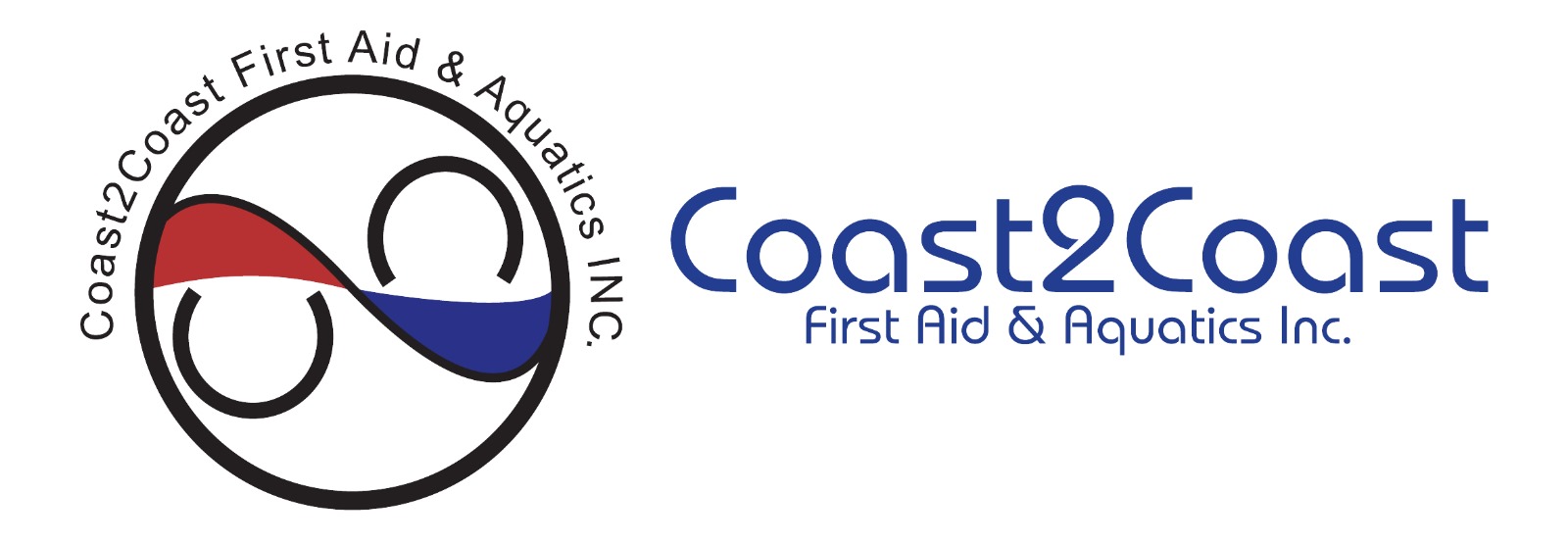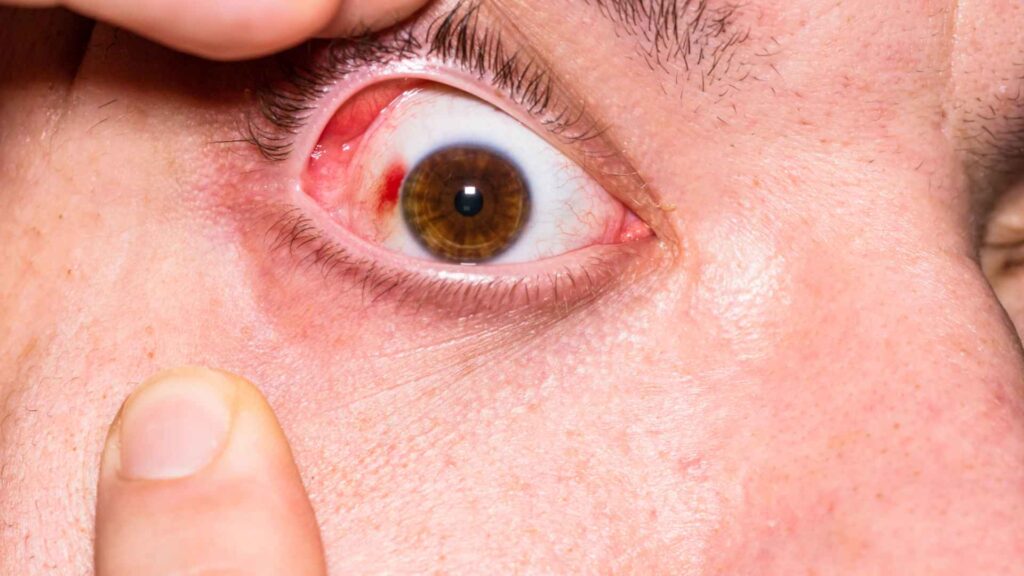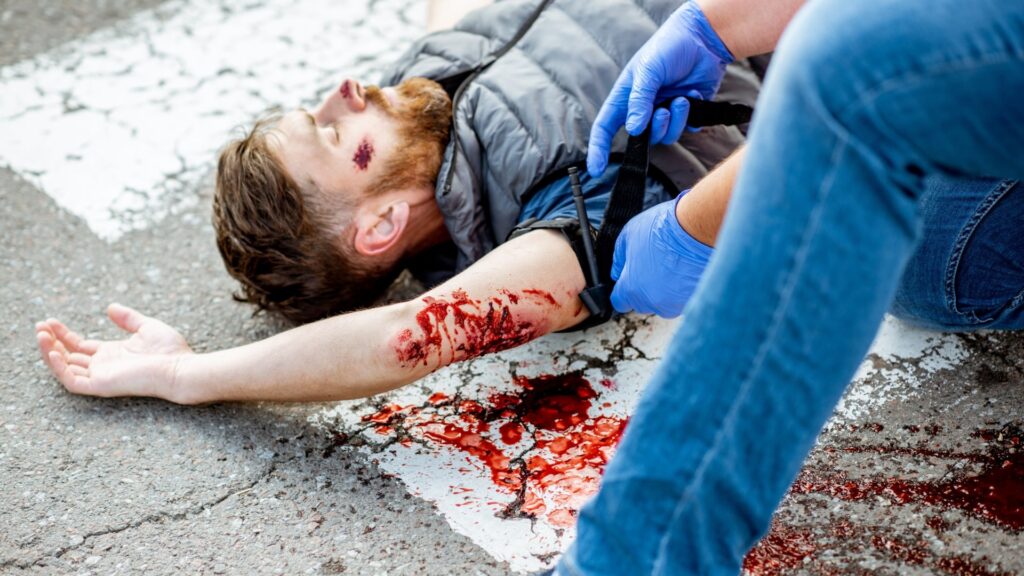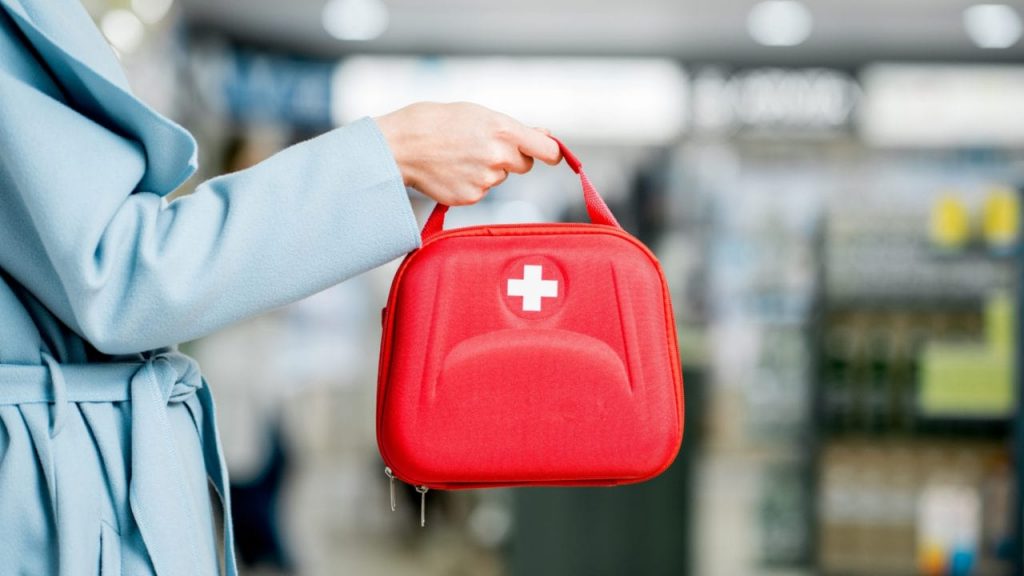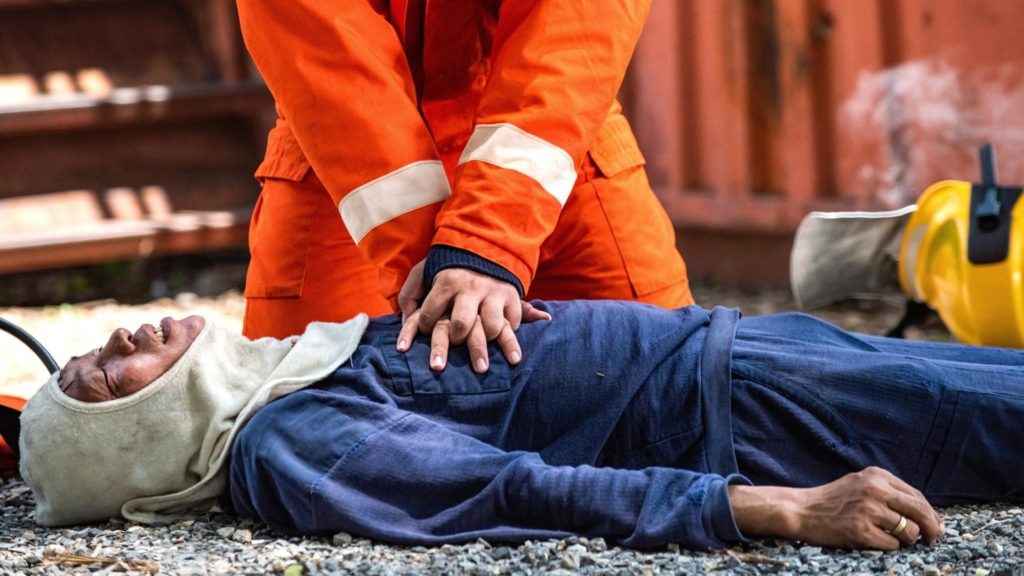Our eyes are windows to the world, but just like any window, they are vulnerable to damage. Whether from playful mishaps or serious accidents, eye injuries can strike at any time. But fear not! With the right First Aid knowledge, you can be a hero in preventing further harm and getting the injured person the care they need. This blog post provides you with the knowledge necessary to handle eye injuries. We will examine various types of eye injuries, dispel myths, and outline proper First Aid procedures. Early intervention is crucial in minimizing vision loss and ensuring a smooth and speedy recovery.
Seeing Double Trouble? Recognizing Different Eye Injuries
 Before diving into action, it is important to know the type of eye injury you are dealing with.
Here’s a breakdown of the most common culprits:
Before diving into action, it is important to know the type of eye injury you are dealing with.
Here’s a breakdown of the most common culprits:
- Foreign Object in the Eye: A speck of dust, eyelash, or even a tiny insect can be incredibly irritating. The natural instinct is to rub, but resist! Rubbing can scratch the cornea, the eye’s clear outer surface.
- Chemical Burns: Exposure to harsh chemicals like bleach or cleaning products can cause severe burns and vision loss. Time is of the essence in these situations.
- Cuts and Punctures: These injuries can be caused by sharp objects and are incredibly serious. They require immediate medical attention.
- Blunt Trauma: A blow to the eye, like a sports injury or a fall, can cause internal bleeding, blurred vision, or even retinal detachment. This needs professional evaluation.
- Black Eye: This common injury appears when blood vessels around the eye break. While painful, it’s usually not a cause for major concern unless accompanied by vision problems.
Debunking First-Aid Myths: What NOT to Do!
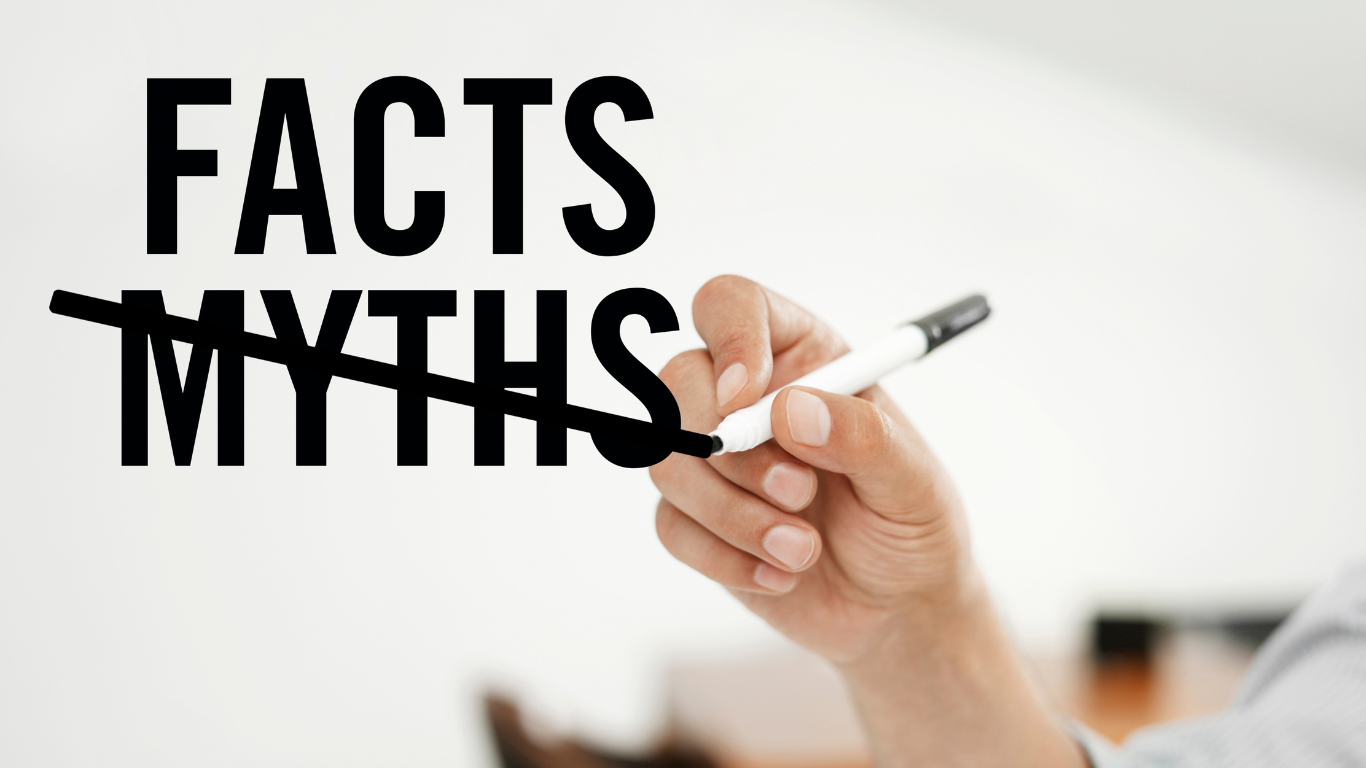 First-aid knowledge is crucial, but misinformation can lead to harmful outcomes. Here are some common myths that need clarification:
❌Myth: Rubbing your eye will remove a foreign object.
✅Reality: Rubbing can scratch the cornea and worsen the situation.
❌Myth: You can use eye drops for chemical burns.
✅Reality: Eye drops might contain irritants that further damage the eye from a chemical injury.
❌Myth: You can remove an object stuck in the eye.
✅Reality: Leave it alone! Removing it can cause serious complications.
❌Myth: A black eye needs a hot compress.
✅Reality: Use a cold compress to reduce swelling and pain.
First-aid knowledge is crucial, but misinformation can lead to harmful outcomes. Here are some common myths that need clarification:
❌Myth: Rubbing your eye will remove a foreign object.
✅Reality: Rubbing can scratch the cornea and worsen the situation.
❌Myth: You can use eye drops for chemical burns.
✅Reality: Eye drops might contain irritants that further damage the eye from a chemical injury.
❌Myth: You can remove an object stuck in the eye.
✅Reality: Leave it alone! Removing it can cause serious complications.
❌Myth: A black eye needs a hot compress.
✅Reality: Use a cold compress to reduce swelling and pain. Be the Hero: First-Aid Steps for Common Eye Injuries
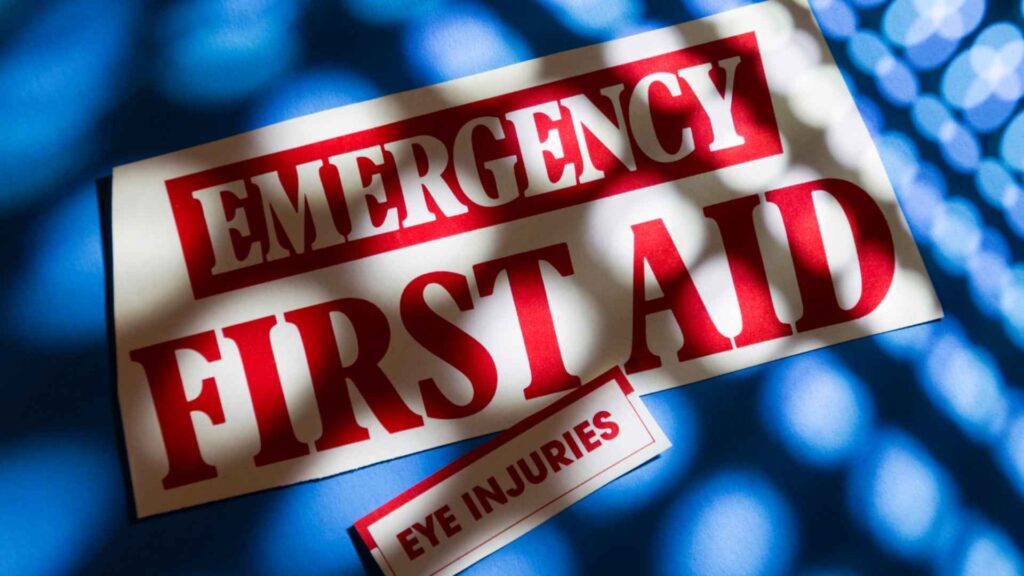 Now that you have all the right information, let us explore how to handle eye injuries:
Now that you have all the right information, let us explore how to handle eye injuries:
- Foreign Objects:
- Wash your hands thoroughly.
- Ask the person to blink repeatedly. This might dislodge the object naturally.
- Try flushing the eye with clean water. Use a gentle stream from an eye wash or a cup for 15 minutes.
- If unsuccessful, cover the eye with a loose bandage and seek medical attention.
- Chemical Burns:
- Immediately flush the eye with clean water for 15 minutes.
- Continue flushing even if the pain subsides.
- Hold the eyelids open during flushing.
- Seek emergency medical attention immediately.
- Blunt Trauma or Cuts:
- Do not apply pressure.
- Apply a cold compress to reduce swelling.
- Cover the eye loosely with a sterile bandage.
- Seek immediate medical attention.
- Black Eye:
- Apply a cold compress wrapped in a cloth to the area for 15-20 minutes at a time, several times a day.
- Over-the-counter pain medication can help manage discomfort.
- Impaled Object:
- Stabilize the Object: Use a rigid object, such as a paper cup with the bottom cut out, to gently secure the impaled object without applying pressure to it. This will help prevent further damage.
- Cover Both Eyes: Cover both eyes with a bulky dressing to immobilize the injured eye and reduce movement.
- Seek Immediate Medical Attention: Call emergency services or transport the injured person to the nearest hospital as quickly as possible.
Buy A First Aid Kit
Take care of any small injuries your family or employees receive with our Multi-Purpose First Aid Kit. Treat them with the wide range of supplies included in this kit.
Beyond the Basics: Additional First-Aid Tips

- Stay Calm: A calm demeanour will reassure the injured person and allow you to think clearly.
- Gather Information: Ask how the injury happened and if they have any pre-existing eye conditions.
- Seek Professional Help When Needed: Err on the side of caution. If the injury seems serious or vision is affected, don’t hesitate to seek medical attention.
Be Prepared, Save Your Sight!
Equipping yourself with proper First Aid knowledge to handle eye injuries empowers you to be a lifesaver. Take a First Aid training offered by Coast2Coast to gain hands-on experience and build confidence in handling emergencies. Remember, a few simple steps can make a world of difference in preserving someone’s vision and life. Join our various First Aid classes at Coast2Coast, and become a Canadian Red Cross certified First Aider.


